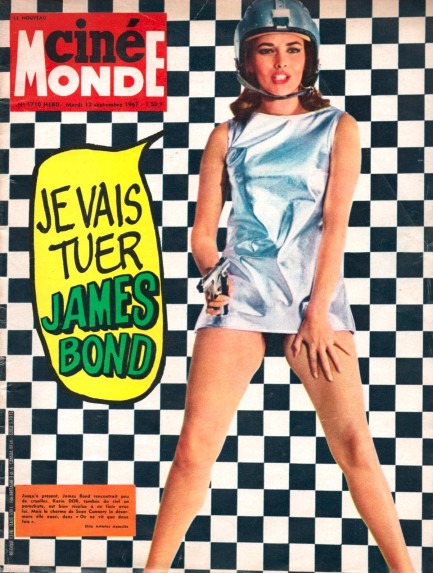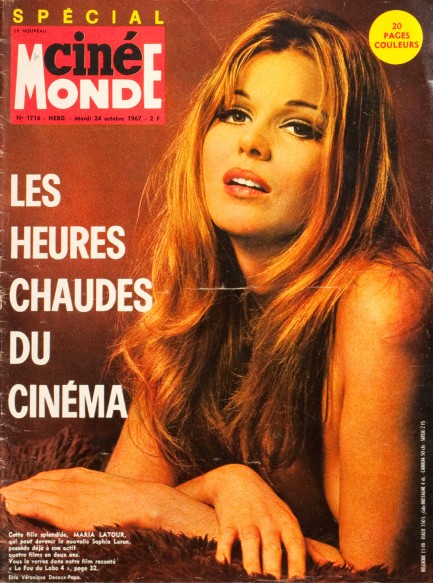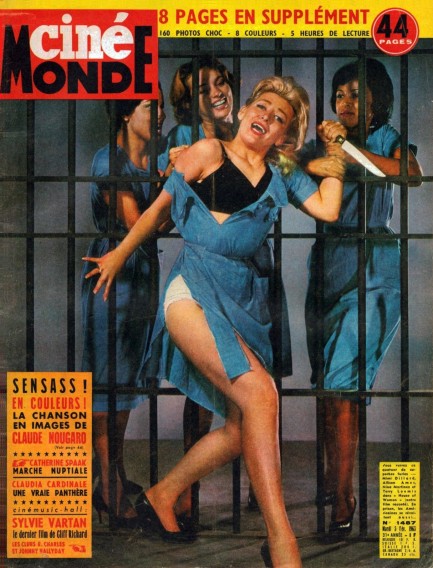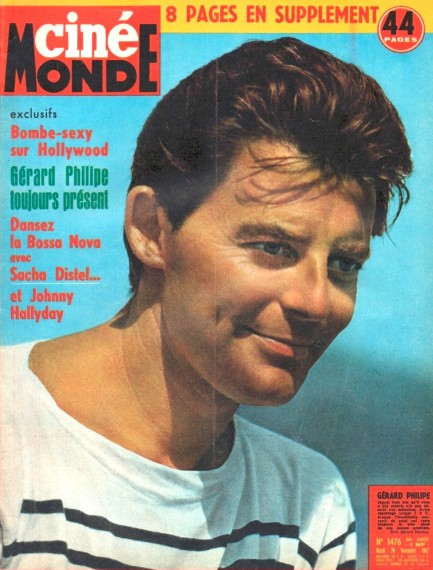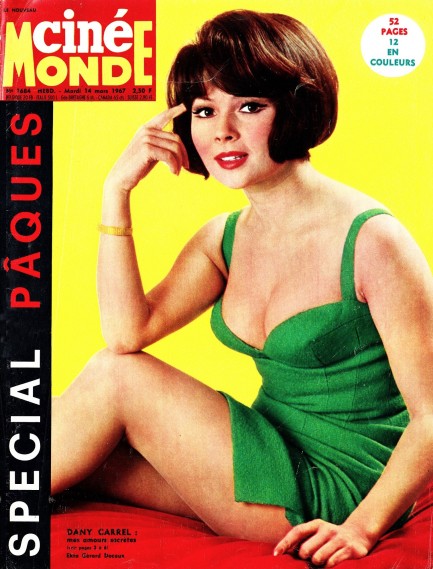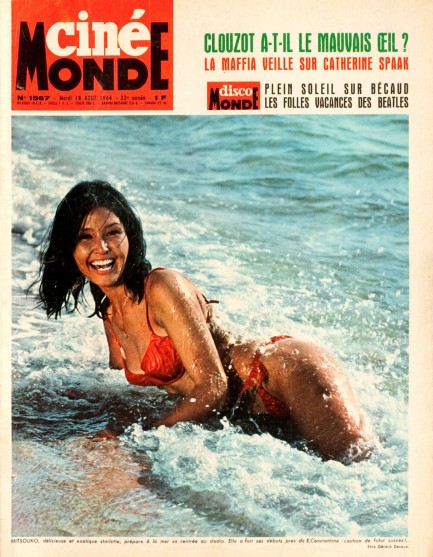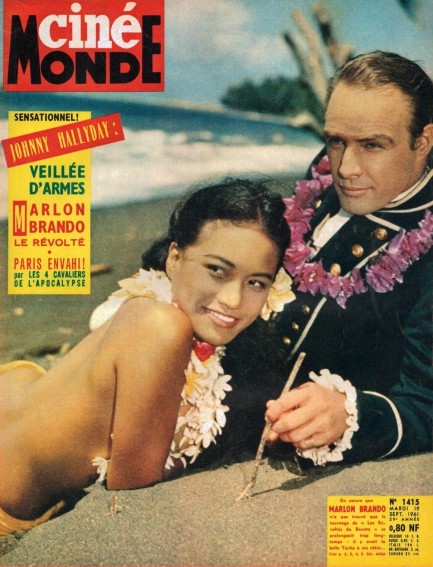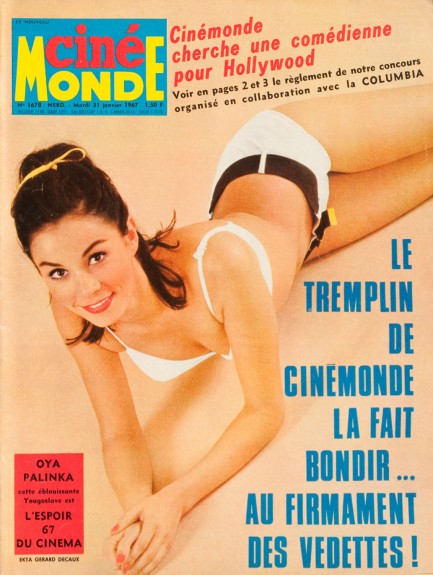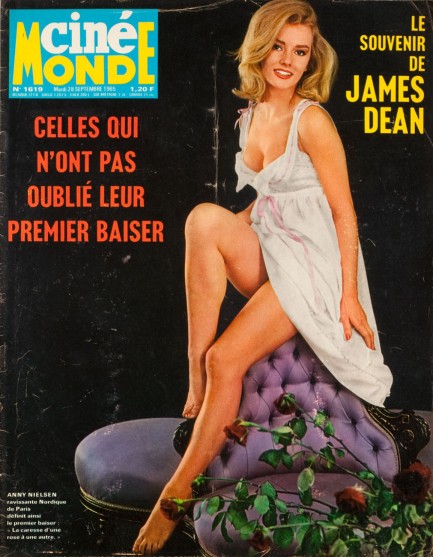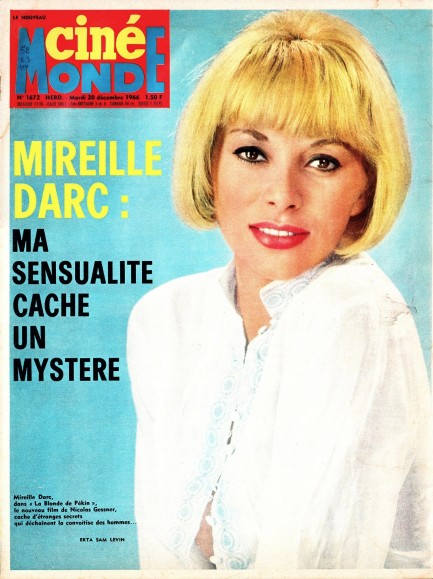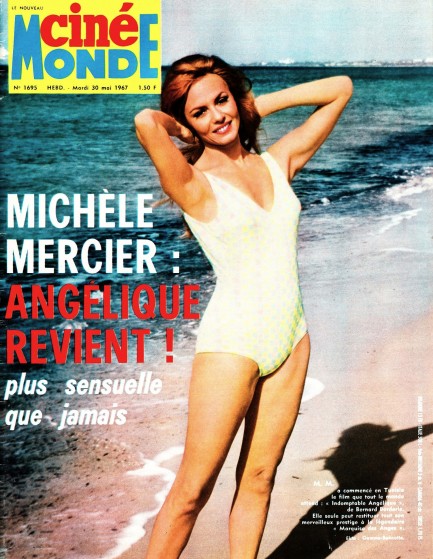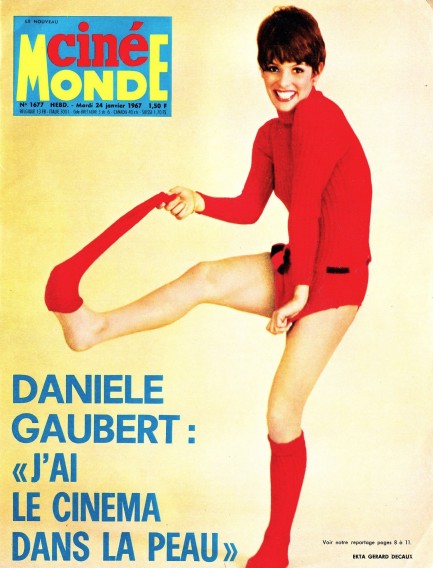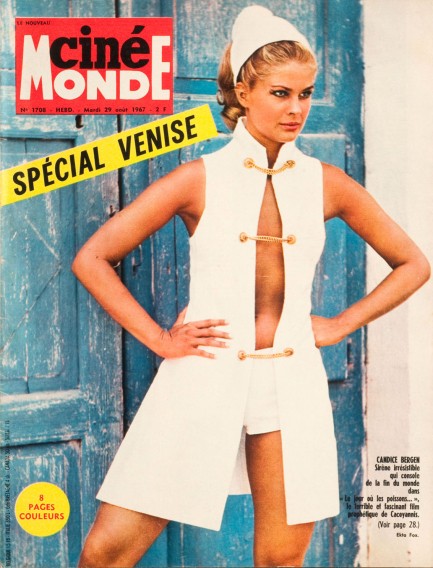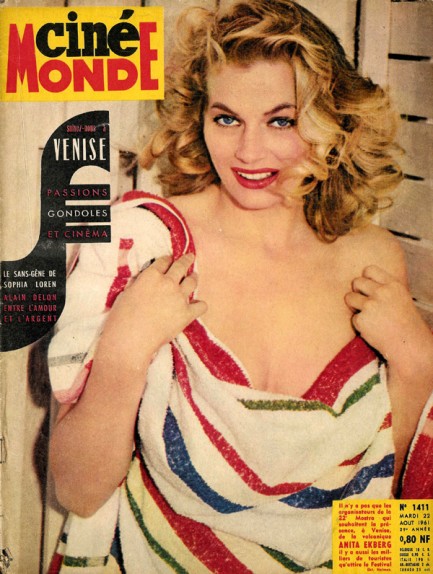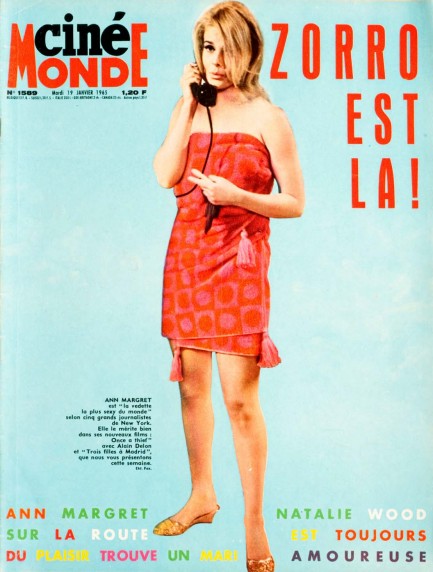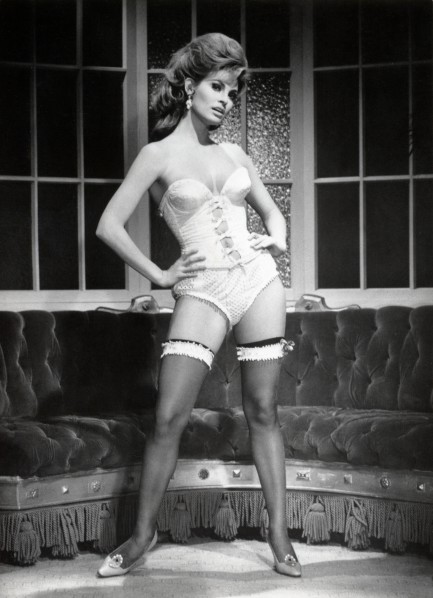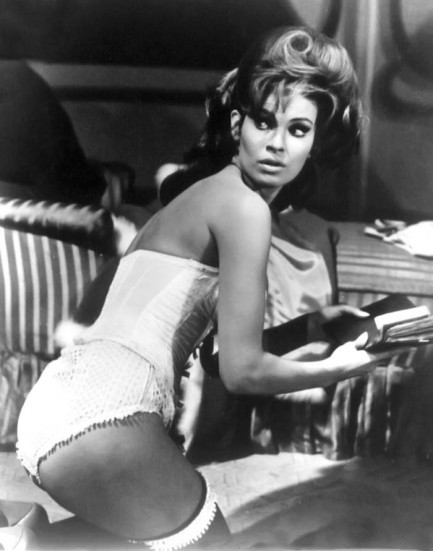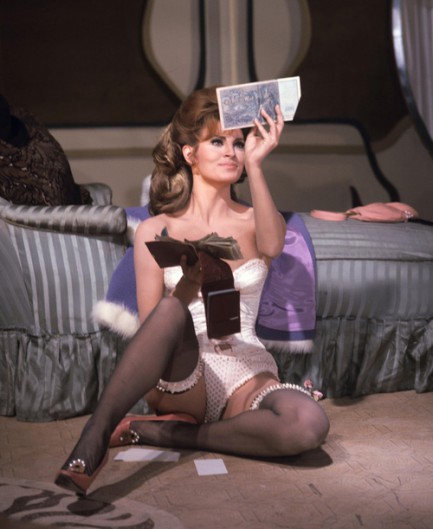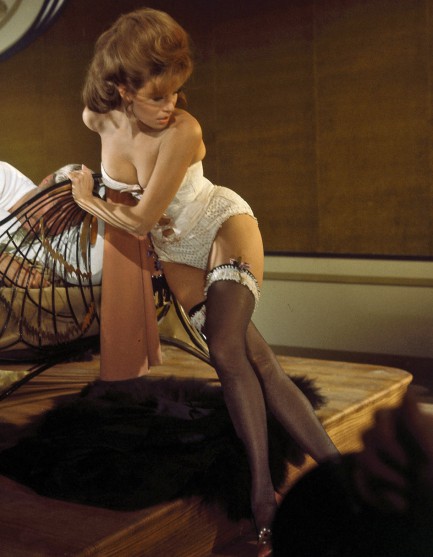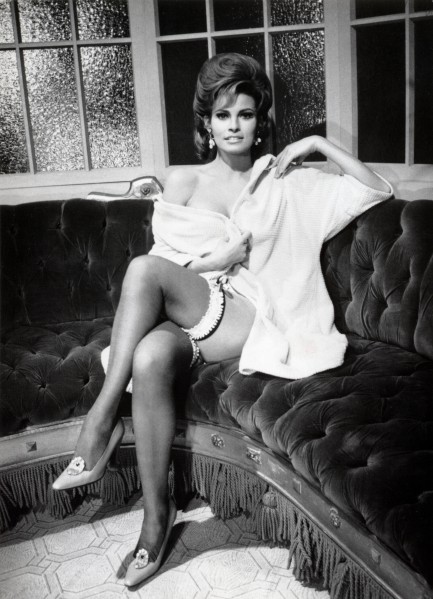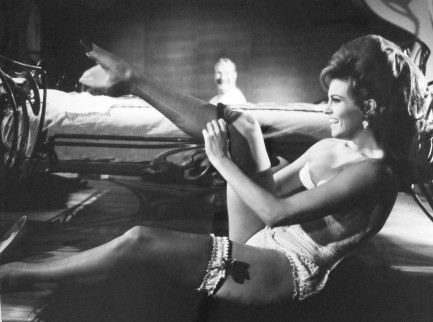 Revenge is a dish best served with hot lead. 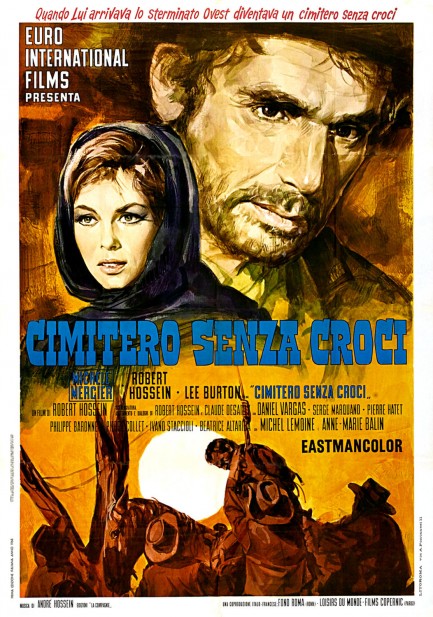
Above is a poster for the French-Italian western Une corde un Colt..., which in Italy was titled Cimitero senza croci and in English was known as Cemetery without Crosses. It premiered in France in January 1969, then opened in Italy today the same year. This falls into the spaghetti western category, with a mostly Italian crew shooting in Spain with actors from France, Spain, and Italy. But before we get too deep into the movie, we want to note that there's a brilliant title song performed by Scott Walker. If you don't know this musical legend, we highly suggest you familiarize yourself with his work. He was a genius who specialized in downbeat pop music that had a cinematic scope. We have all his albums, and they're all great.
The movie is a revenge tale in which French hottie Michèle Mercier seeks to punish the scoundrels who double-crossed and hanged her man. She appeals to her hubby's pal Robert Hossein—also the director and co-writer of this epic—who refuses until it becomes clear Mercier will take on the difficult task herself if she must. So Hossien agrees, and opts for the direct route to revenge by signing on with the enemy, then double-crossing the clan leader by kidnapping his daughter. This turns out to have unexpected consequences, but then that's the thing about revenge—it rarely goes as smoothly as hoped. Just ask Dick Powell.
As westerns go, this one has all the required elements—rickety old frontier town, unshaven steely-eyed villains, frilly saloon girls, and so forth. The genre also tends to feature repetitive visual gimmicks, and in this one Hossein always slips on a single black glove when he's about to ventilate someone. He's sort of a reverse Michael Jackson that way, except when he puts on the glove it's everyone else who starts to walk backwards. Ultimately, we suppose Cimitero senza croci asks whether it's better to move on from injustice, or risk one's figurative soul by seeking to personally balance the cosmic scales. It's not quite an Eastwood calibre western, but then again how could it be? For fans of the genre it'll go down like a smooth barroom whisky.
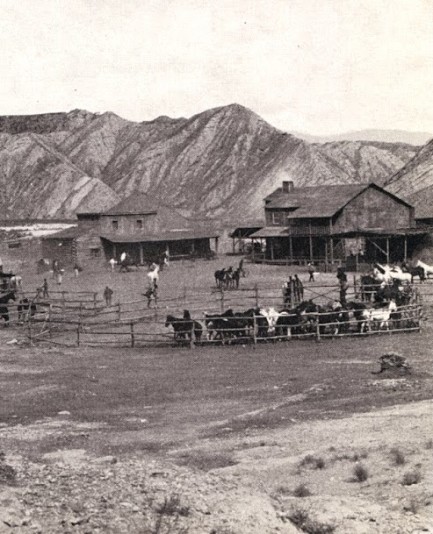 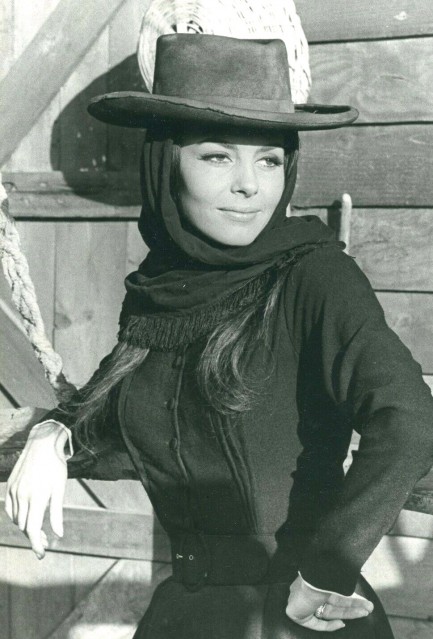 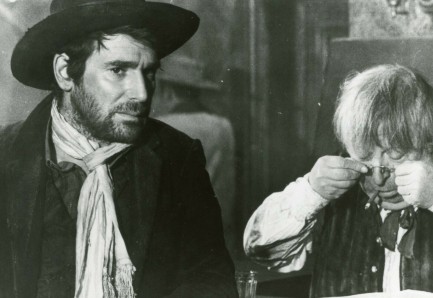 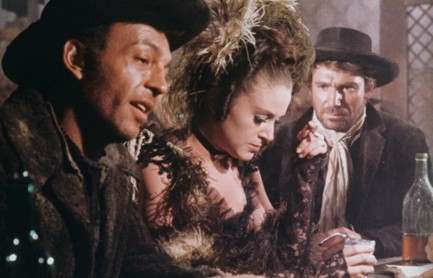 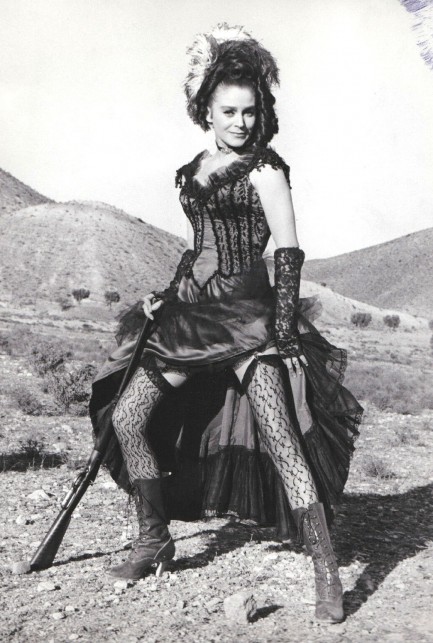 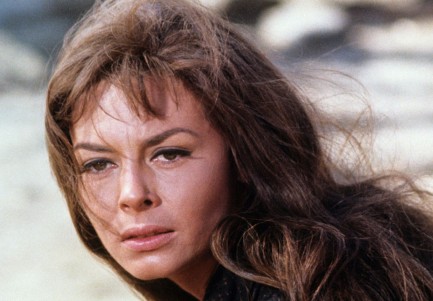 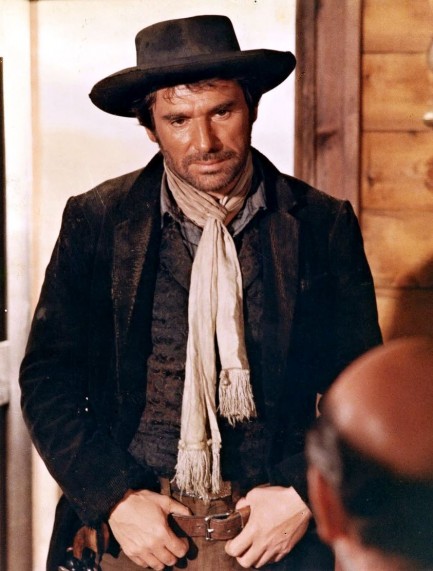 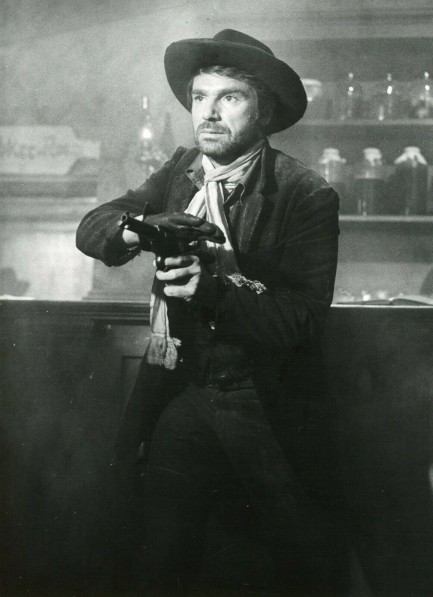 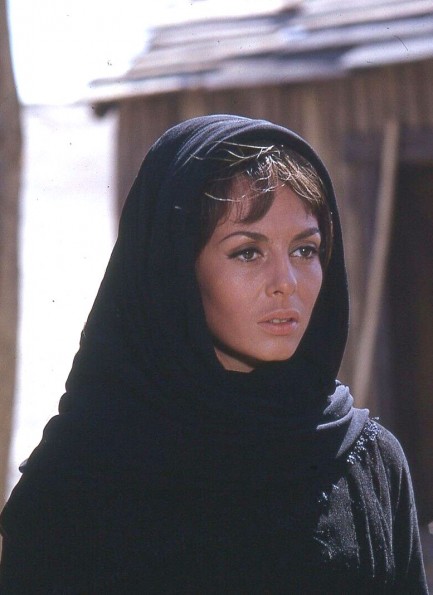 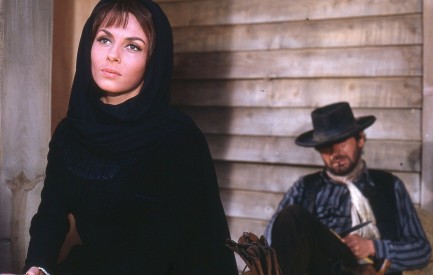 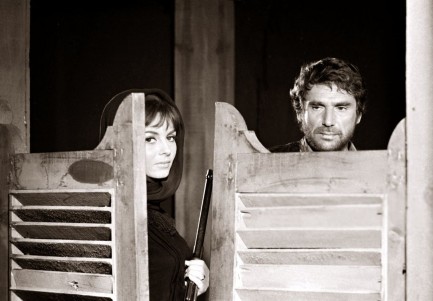 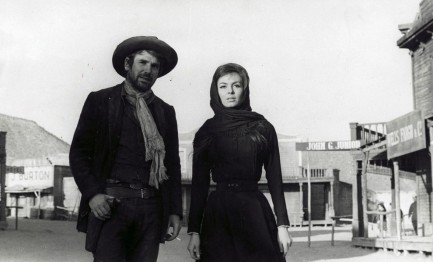
 Continental Film Review ties modern cinema up in a tidy little package. 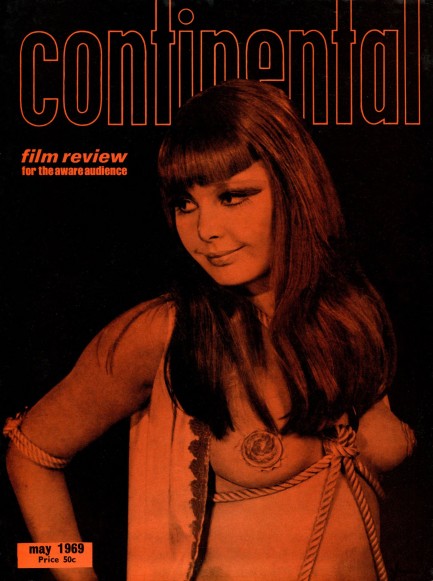
Above and below, the cover and assorted interior pages from Continental Film Review, with all the rare imagery and erudite commentary from the European cinema scene readers had come to expect. The cover features German actress Brigitte Skay bound with rope, and those of note inside include Anna Gaël, Romy Schneider, Alain Delon, Serge Gainsbourg, Jane Birkin, and Edwige Fenech. Skay and Gaël are featured because of their roles in the 1969 sci-fi film Zeta One, aka The Love Factor, which it happens we discussed way back in 2010. Shorter version: Barbarella it ain't. Continental Film Review had a secondary focus on non-performance visual arts. This issue looks at animation from Sweden and talks about some hot illustrators of the time, including Jan Lenica and Per Ahlin, drawing comparisons between them and famed painters like René Magritte. All of that and more in thirty-plus scans. 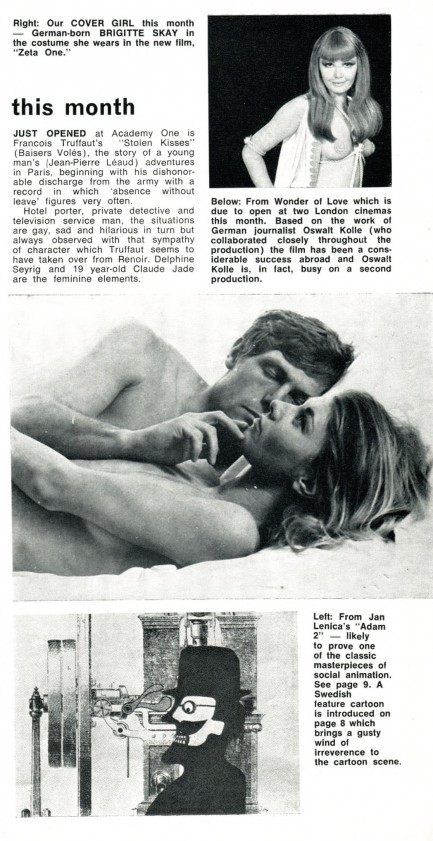 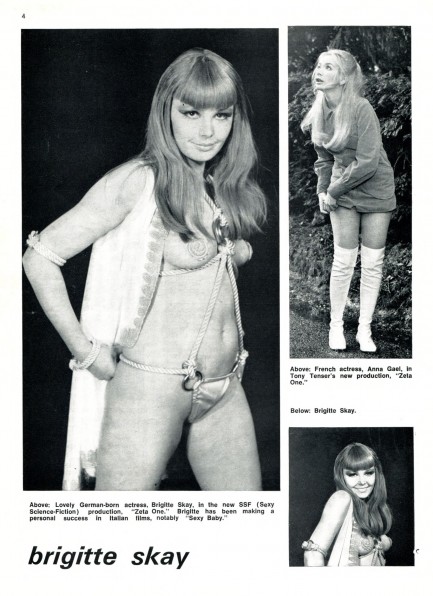  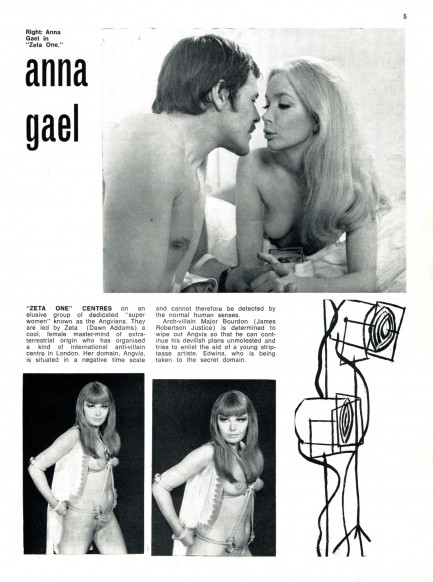 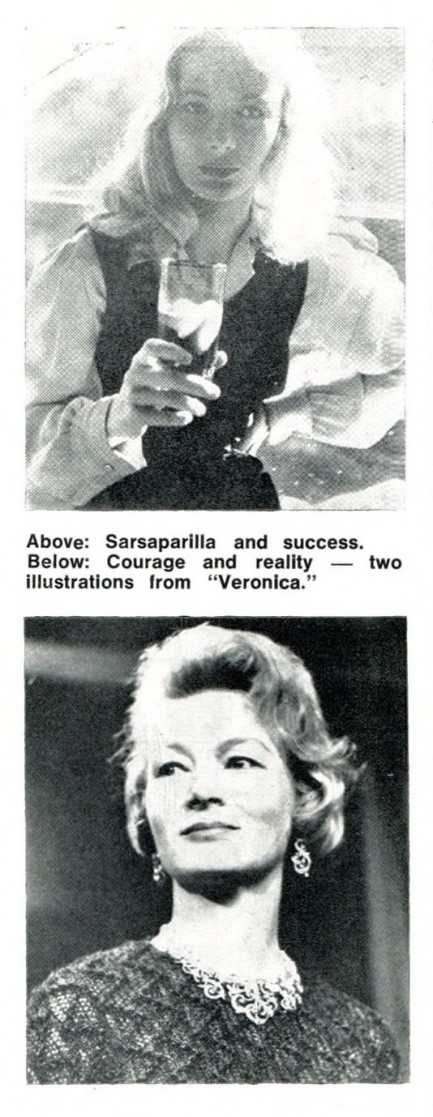 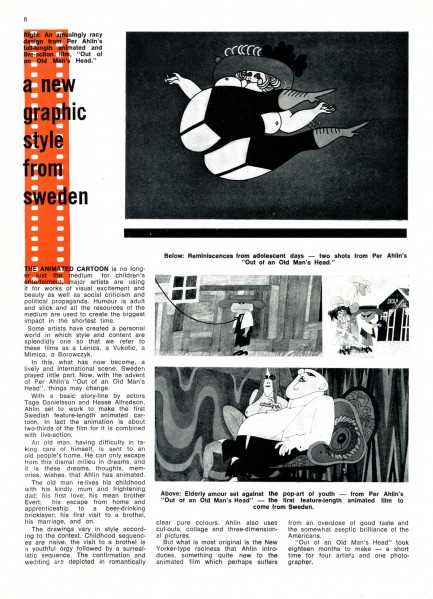 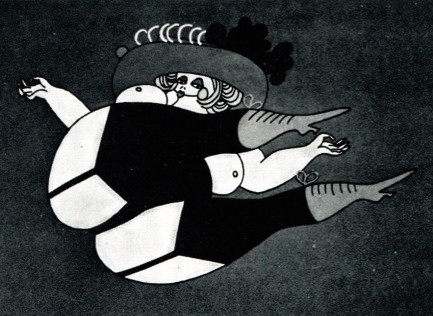 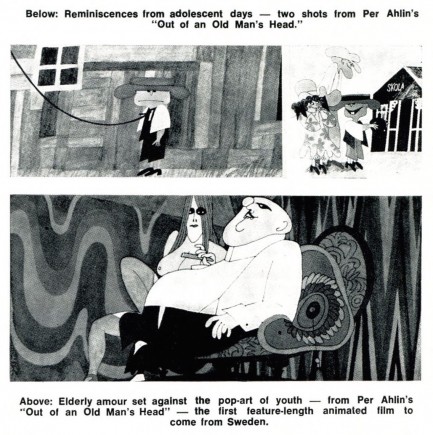  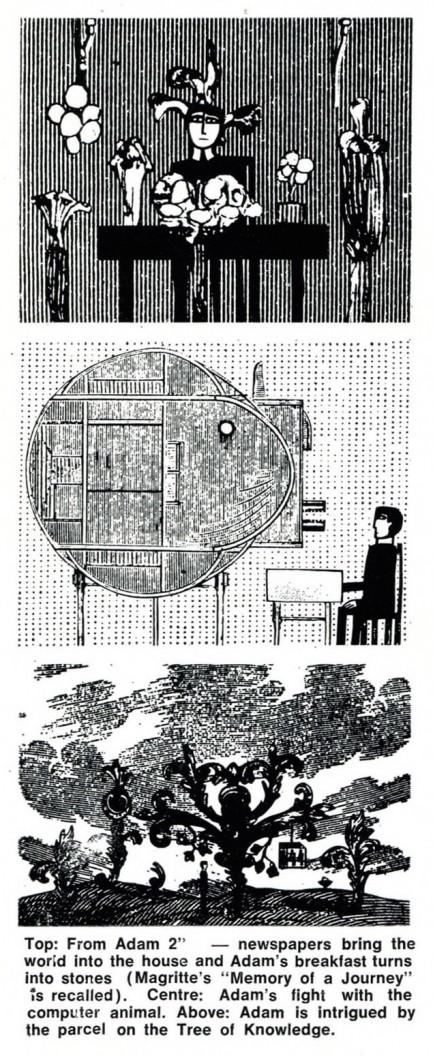 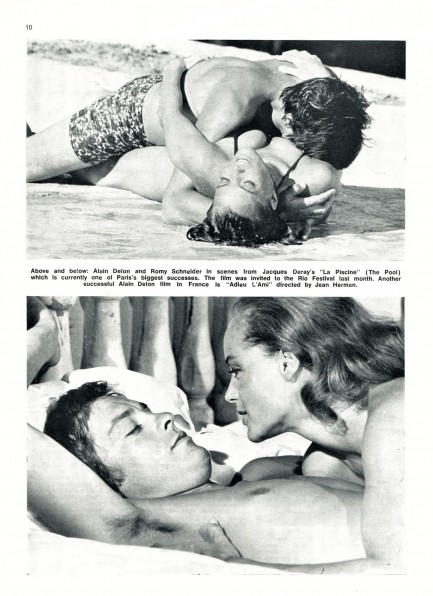 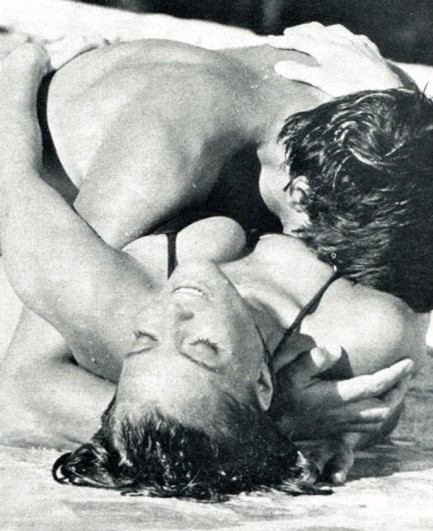 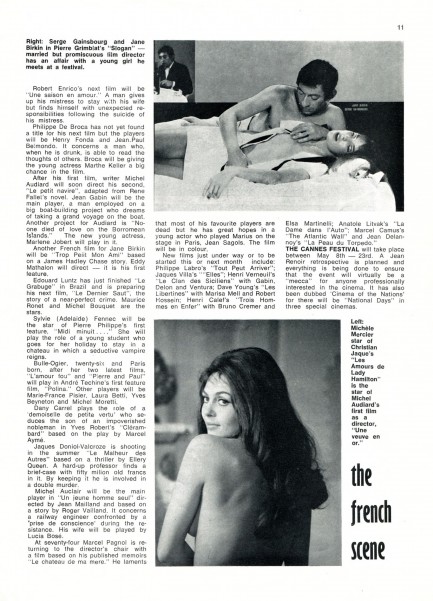  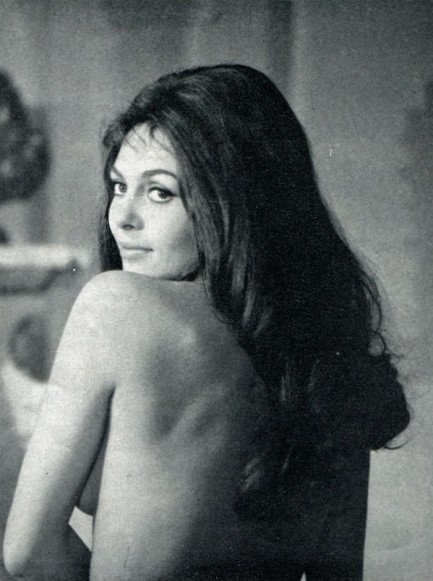 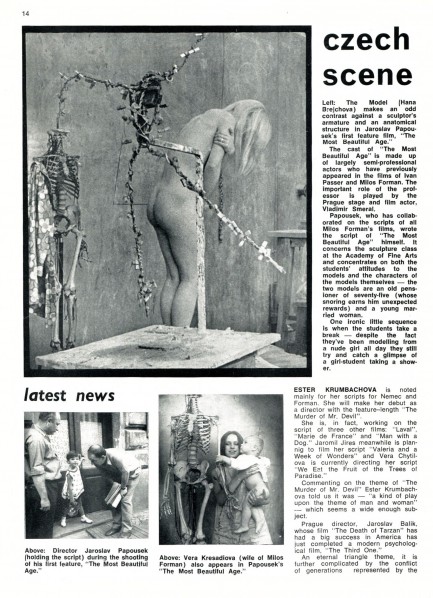  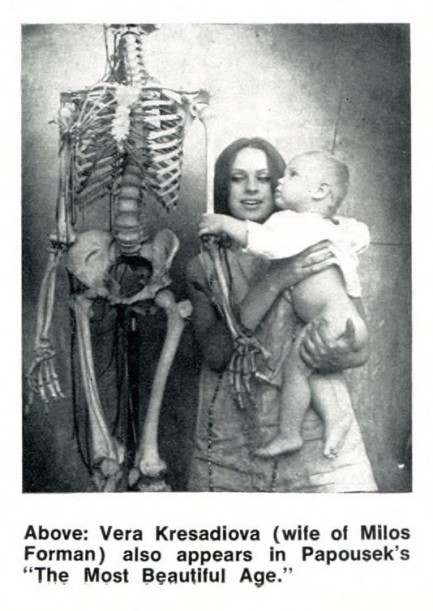 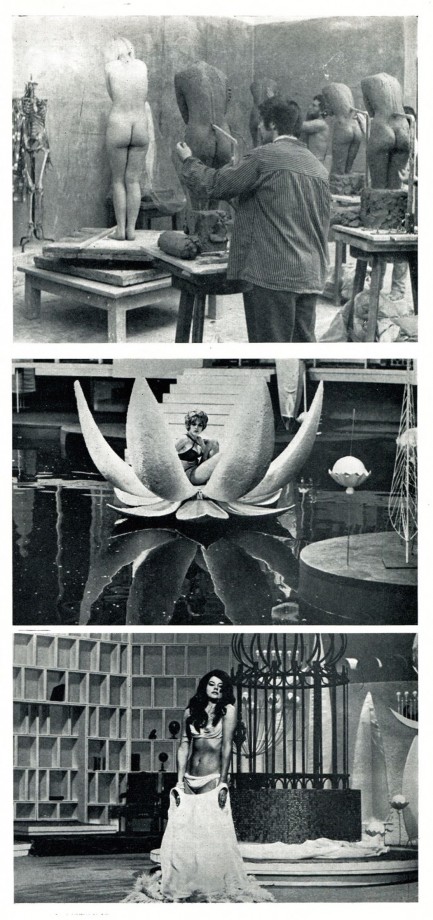 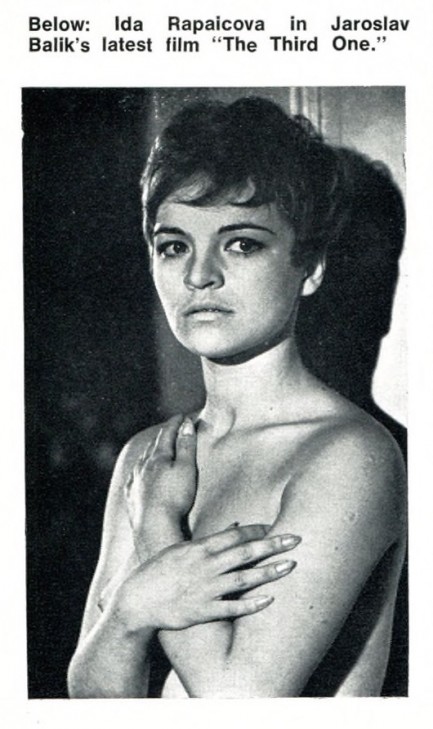 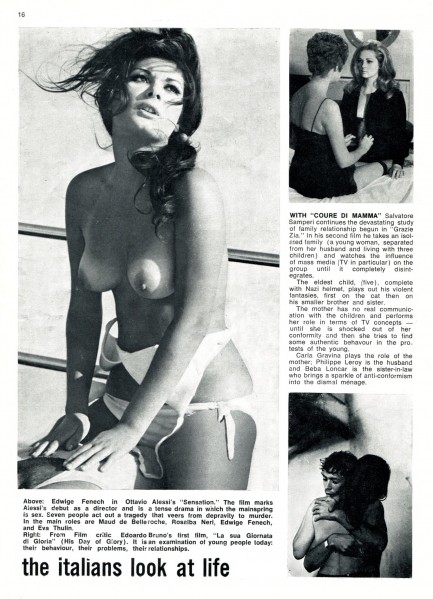 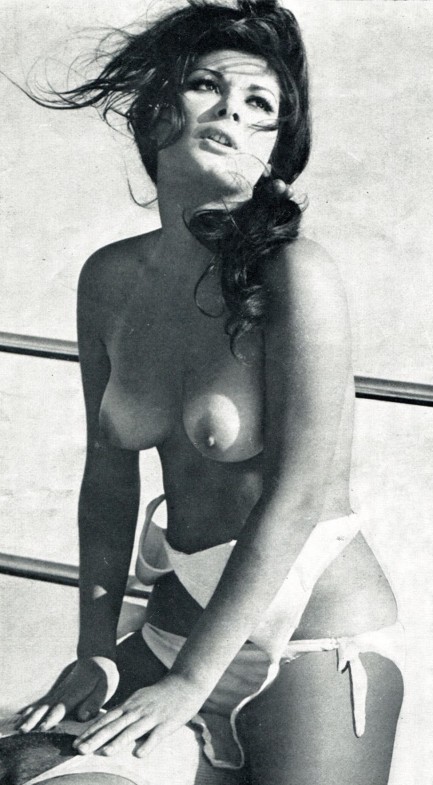 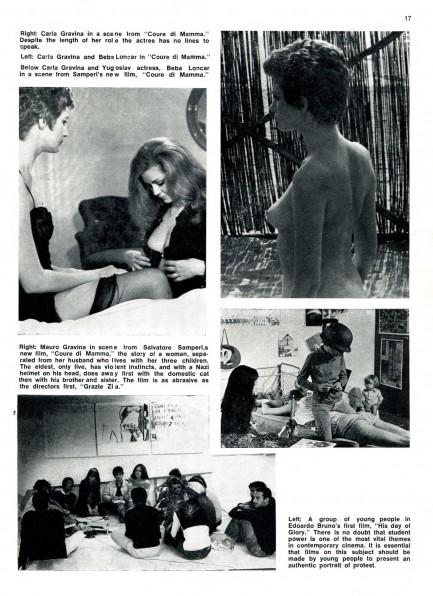 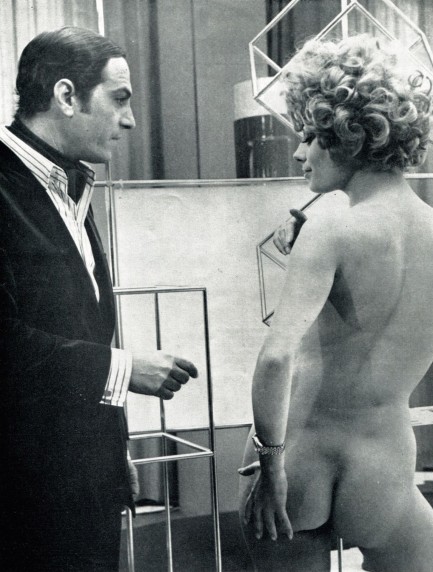 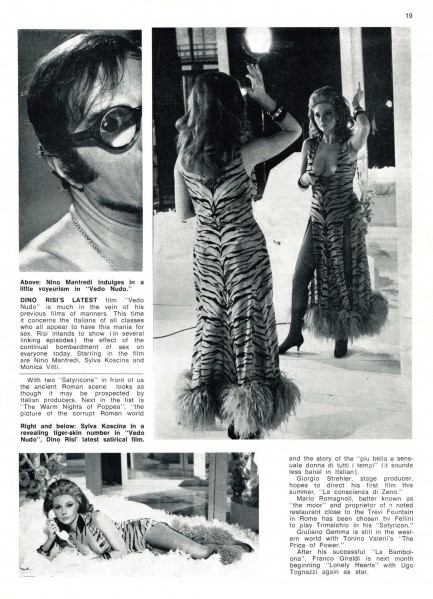 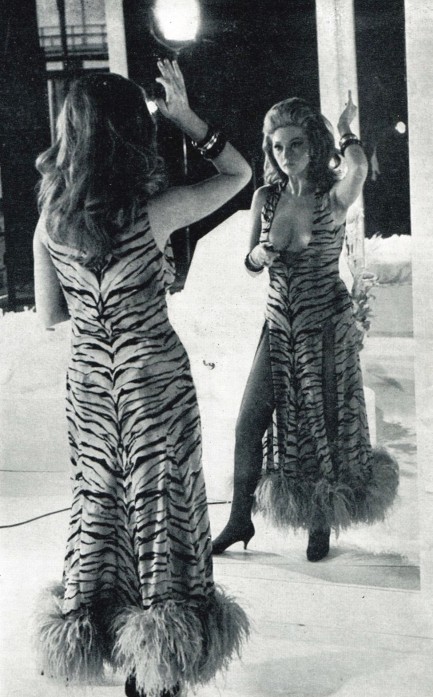 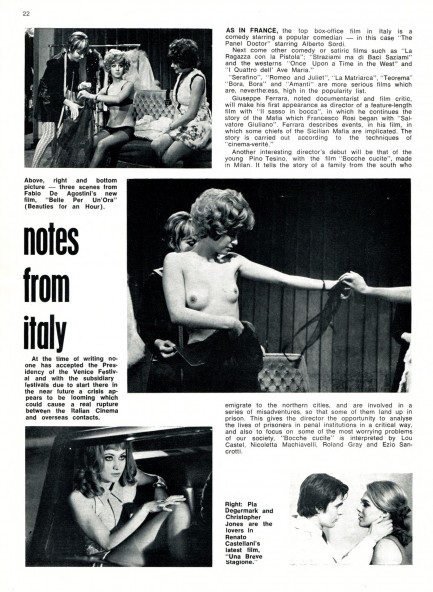 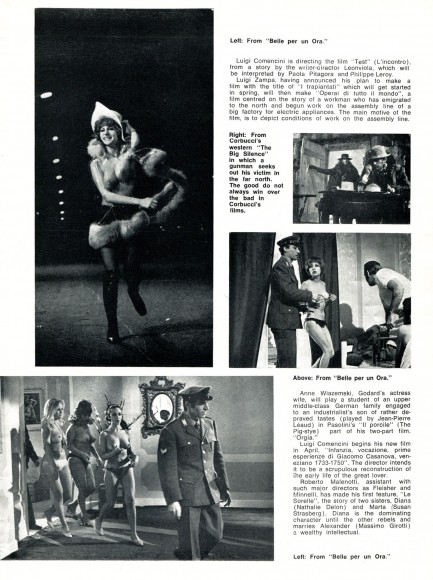 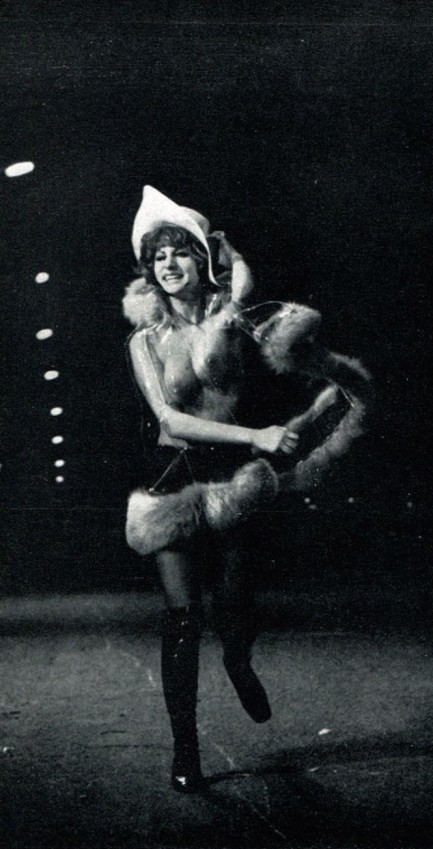  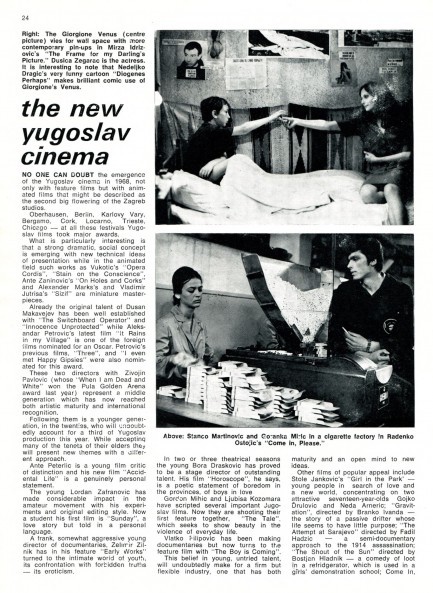 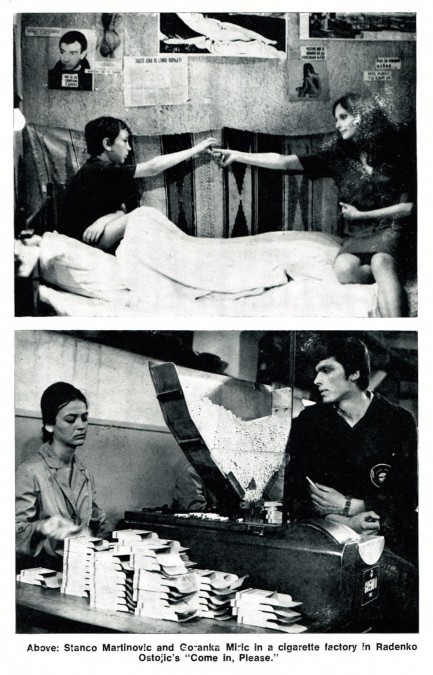 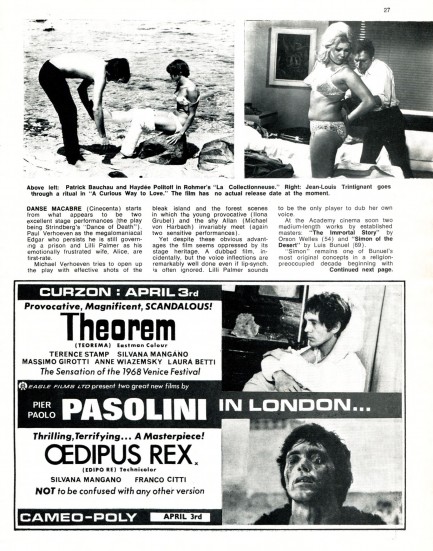 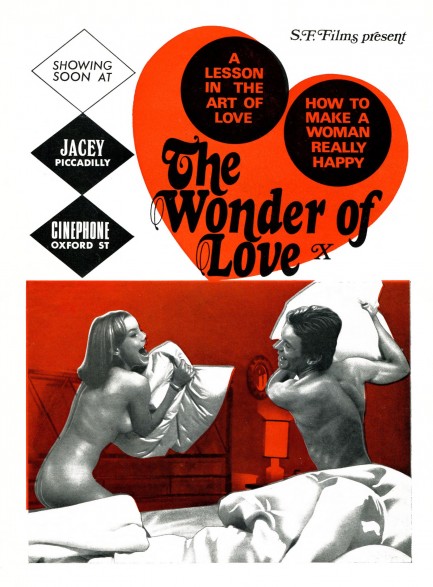
 Belted, booted, and perfectly jumpsuited. 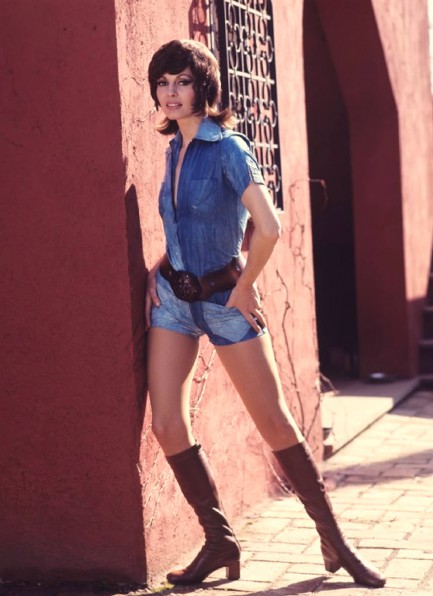
French actress Michèle Mercier began her film career in 1952 and was still going strong as of 2013. Among her many films were Casanova 70, Le plus vieux métier du monde, aka The World's Oldest Profession, and I tre volti della paura, aka Black Sabbath. We love this shot of her. She seems ready for anything—from dancing at the disco to dealing with danger. It dates from 1971.
 Getting the most out of challenging positions. 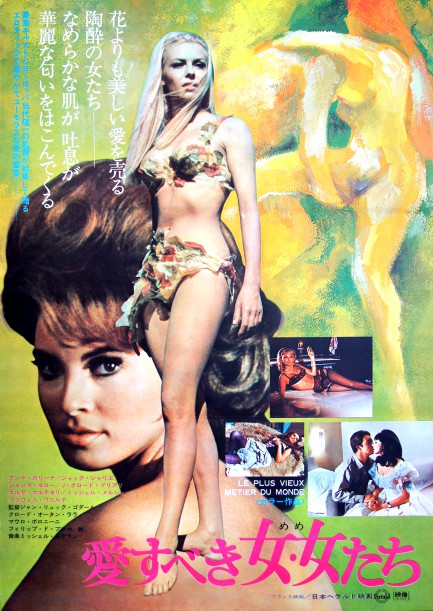
Did we not just see Raquel Welch yesterday, as well as earlier this week? Indeed we did, but we assume you don’t mind the return engagement. This Japanese poster with her and Michèle Mercier was made to promote the comedy Le plus vieux métier du monde, aka The Oldest Profession, which played in France in 1967 but didn’t appear in Japan until today in 1971. We watched it last night, and it's a six-part anthology dealing with prostitution through the ages. For example, the first sketch is set during prehistory—that time inhabited by slender Anglo Saxon fashion models—another is set in ancient Rome, and another during the Parisian gay nineties, where Welch makes her appearance wearing corsets and speaking French. The last segment, directed by Jean-Luc Godard, takes place in the future. Or what used to be the future in 1967—the year 2000.
While all the skits deal with prostitution, some also deal with money, and the efforts of the female characters to obtain it. For instance Welch finds out her dumpy customer is a banker and the rest of the segment follows her ultimately successful gambit to trick him into marrying her. Besides Welch and Michèle Mercier, the movie features top sixties sex symbols Elsa Martinelli, Jeanne Moreau, Anna Karina, Marilù Tolo, and Nadia Gray. That's a lot of star power in a somewhat low wattage movie, but there are laughs here, as long as you accept going in that comedies about prostitutes are not in any way realistic or politically correct. One great by-product of Le plus vieux métier du monde was a great Welch promo shoot, of which we have photos below. These will probably make you want to watch the film no matter what we think of it.
|
 |

The headlines that mattered yesteryear.
2003—Hope Dies
Film legend Bob Hope dies of pneumonia two months after celebrating his 100th birthday. 1945—Churchill Given the Sack
In spite of admiring Winston Churchill as a great wartime leader, Britons elect
Clement Attlee the nation's new prime minister in a sweeping victory for the Labour Party over the Conservatives. 1952—Evita Peron Dies
Eva Duarte de Peron, aka Evita, wife of the president of the Argentine Republic, dies from cancer at age 33. Evita had brought the working classes into a position of political power never witnessed before, but was hated by the nation's powerful military class. She is lain to rest in Milan, Italy in a secret grave under a nun's name, but is eventually returned to Argentina for reburial beside her husband in 1974. 1943—Mussolini Calls It Quits
Italian dictator Benito Mussolini steps down as head of the armed forces and the government. It soon becomes clear that Il Duce did not relinquish power voluntarily, but was forced to resign after former Fascist colleagues turned against him. He is later installed by Germany as leader of the Italian Social Republic in the north of the country, but is killed by partisans in 1945.
|

|
|

It's easy. We have an uploader that makes it a snap. Use it to submit your art, text, header, and subhead. Your post can be funny, serious, or anything in between, as long as it's vintage pulp. You'll get a byline and experience the fleeting pride of free authorship. We'll edit your post for typos, but the rest is up to you. Click here to give us your best shot.

|
|



















































